An elusive night photograph inside Wrangell-St Elias
One Comment
Summary: Last fall, I made an unusual photograph at one of the most iconic locations in Wrangell-St Elias National Park. Read practical details about that location, the challenges of making that particular photograph, and how I processed my files to make the most out of the opportunity.
Autumn is my favorite time to visit Alaska because of the fall foliage and absence of bugs. A third reason has become personally important: I have been seeking to make a landscape photograph with stars in each of the national parks. It is not an easy proposition in Alaska. See how many night photographs made within Wrangell-St Elias National Park you can find on the Internet.
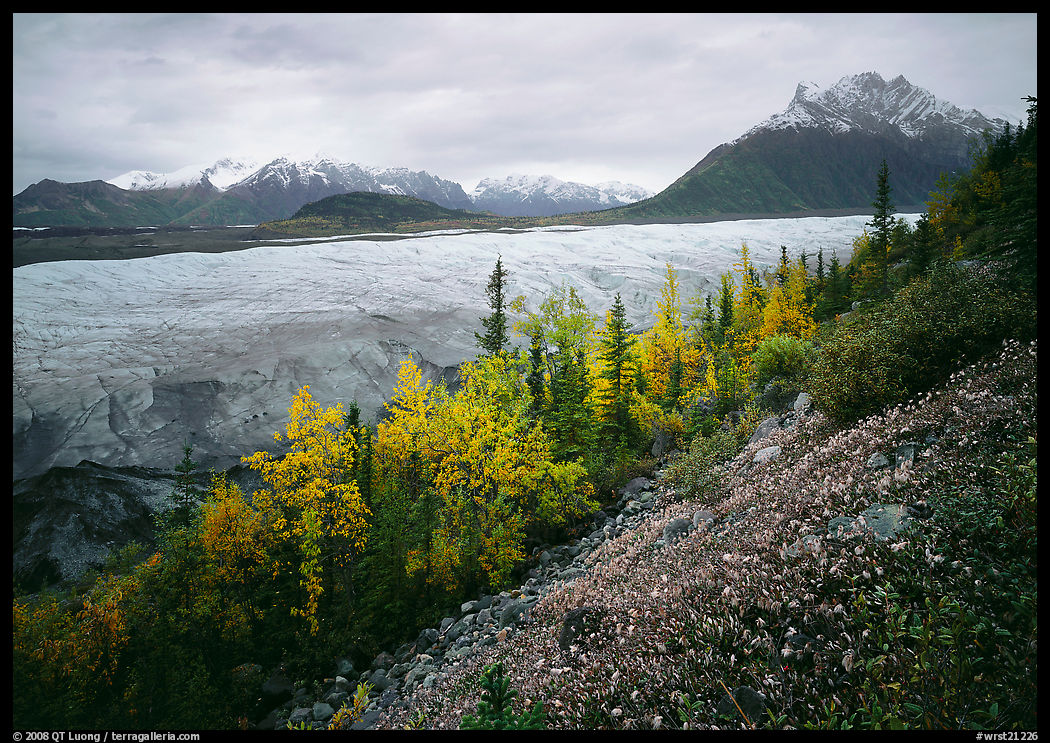
The location
Planning a night photograph in Wrangell-St Elias National Park, my primary destination was the trail along the Root Glacier north of Kennicott where I made one of my first large-format photographs of the park more than twenty-years ago (above). A hike not to be missed for any visitor to Wrangell-St Elias, it offers the most iconic landscape views in the park as it overlooks the glacier from a close distance with towering mountains behind. The moderate nature of the trail makes it easily the most popular in the area, if not the entire park. From that trail, adventurous folks can explore the Root Glacier or even cross it and then scramble up Donoho Peak. An official camping area about 1.4 miles from Kennicott along the trail facilitates night photography. The National Park Service (NPS) calls it the “Jumbo Creek Campground”, but amenities are few. Coming from Kennicott, you cross Jumbo Creek on a tiny footbridge – the year-round stream provides drinking water, after which you’ll find in that order a bear box, a few small primitive sites, and a toilet quite far up the trail, past the junction with the path descending to Root Glacier. The camping spot, suitable even for beginning backpackers, provides an inexpensive base for exploring the Kennicott area – by contrast rooms at the Kennicott Glacier Lodge start around $300 per night.
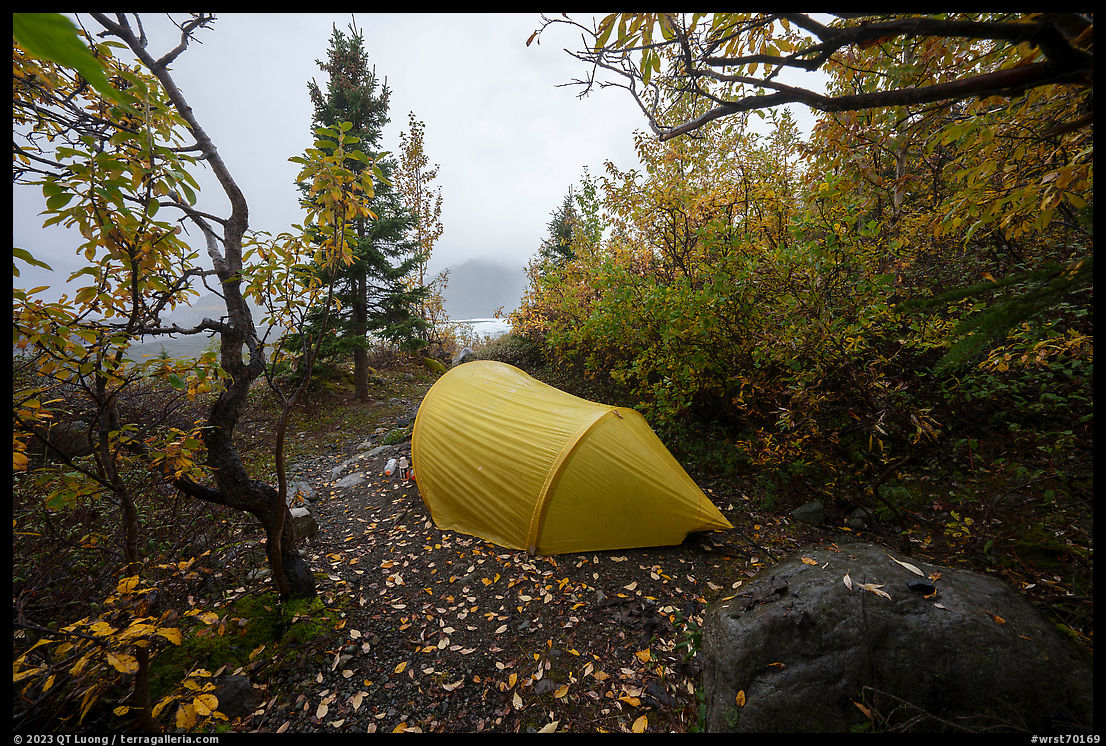
To get there, you drive the McCarthy Road, which takes 2 – 2.5 hours although it is only 61 miles long. Despite what you sometimes read, I’ve driven the road round-trip four times with a rental sedan and never experienced any issues. Past the end of the road, there is no vehicle access for visitors. Instead, you walk or bike across the footbridge. From the footbridge, it is about half a mile to McCarthy where most of the amenities are located, or 5 miles to Kennicott, the site of some of the most impressive abandoned mining structures anywhere, and the starting point for great trails. There are two routes to walk from the footbridge to Kennicott, but none are particularly rewarding. The current road offers some views but is quite dusty and has vehicles driving along. The Wagon Road Trail, a former road, is enclosed in the forest with no views at all. However, about a mile from Kennicott, it skirts a historic cemetery with a nostalgic atmosphere that is well worth a round-trip hike from Kennicott.
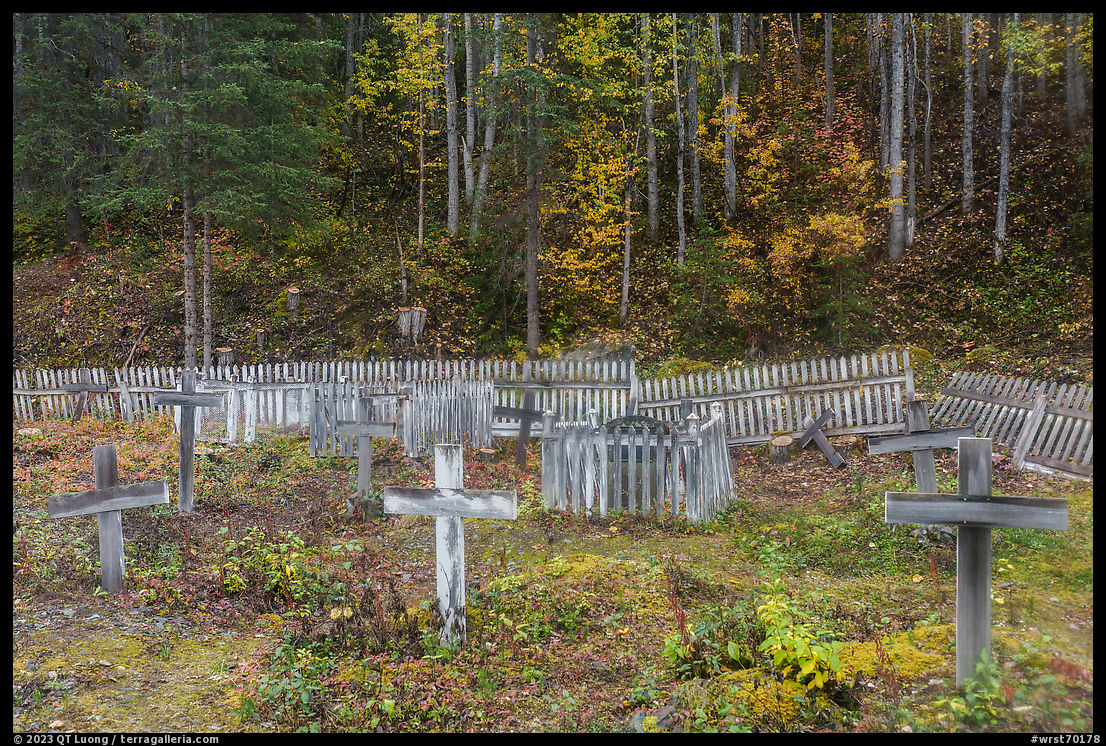
The challenges
Even in the summer, the access to some Alaska national parks can be daunting. In the winter, which is half of the year in Alaska, seriously frigid temperatures and snow make it an order of magnitude more difficult. By mid-April, daily high temperatures may remain below freezing, but there is already no longer any night as defined by conditions darker than astronomical twilight. In the summer, visitors enjoy moderate weather and twenty-four hours of daylight, but the absence of total darkness means no starry skies. It is not until late August that darkness returns and October may already be the beginning of winter. This left part of September as the best window for my trip. Why not the entire month? In 2023, the full moon occurred on August 30, and until September 8th, the moon did not set at all during nighttime. It was at least a half moon, bright enough to dominate the night sky.Yet, September presented specific logistical challenges. First, it is that it is considered by many Alaskans to be the best month for outdoor activities and in particular, is prime hunting time. Before our flight to Gates of the Arctic National Park, which was delayed because of busy pilots, we found several stores sold out of essential outdoor items. When we returned from the park, we were not able to find a single hotel room in Fairbanks and had to settle for camping out with our soaked gear.
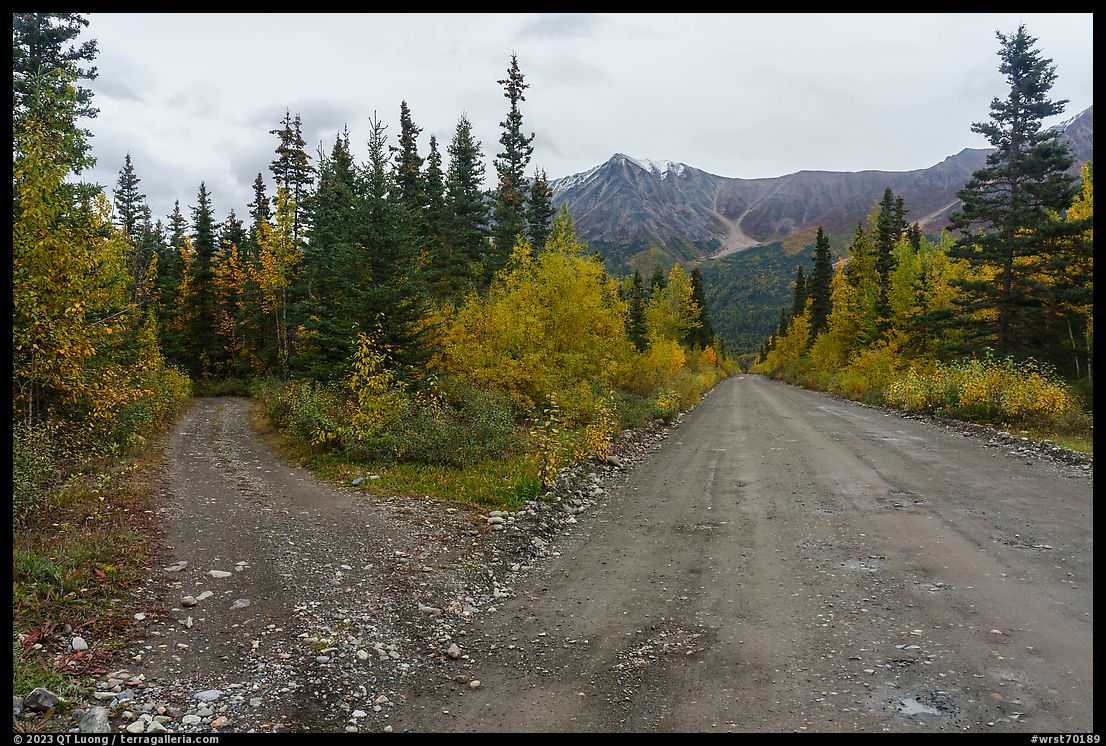
As previously mentioned, neither the old nor the new road (whose junction is shown above) are great walks. Visitors usually catch a shuttle from the bridge or McCarthy to Kennicott. During the visitor season, shuttles run hourly or better from 8:30 am to 6:30 pm. The NPS website mentions that a timetable is posted at the shelter near the bridge that serves as a shuttle stop, however on September 16, we could not find any such document. I was wondering if the shuttle was still running but decided to complete one hour of waiting. The shuttle came. The driver announced that everything in McCarthy and in Kennicott had already closed and that the last shuttle run of the season was going to take place in a few hours. So the second challenge of a September visit is that in the second half of the month, when the fall foliage is at its peak, you will have to be self-sufficient, including walking the 5 miles each way between the bridge and Kennicott unless you can hitch a ride. It was unusual have the mining town and seemingly the entire area to ourselves with nobody in sight.
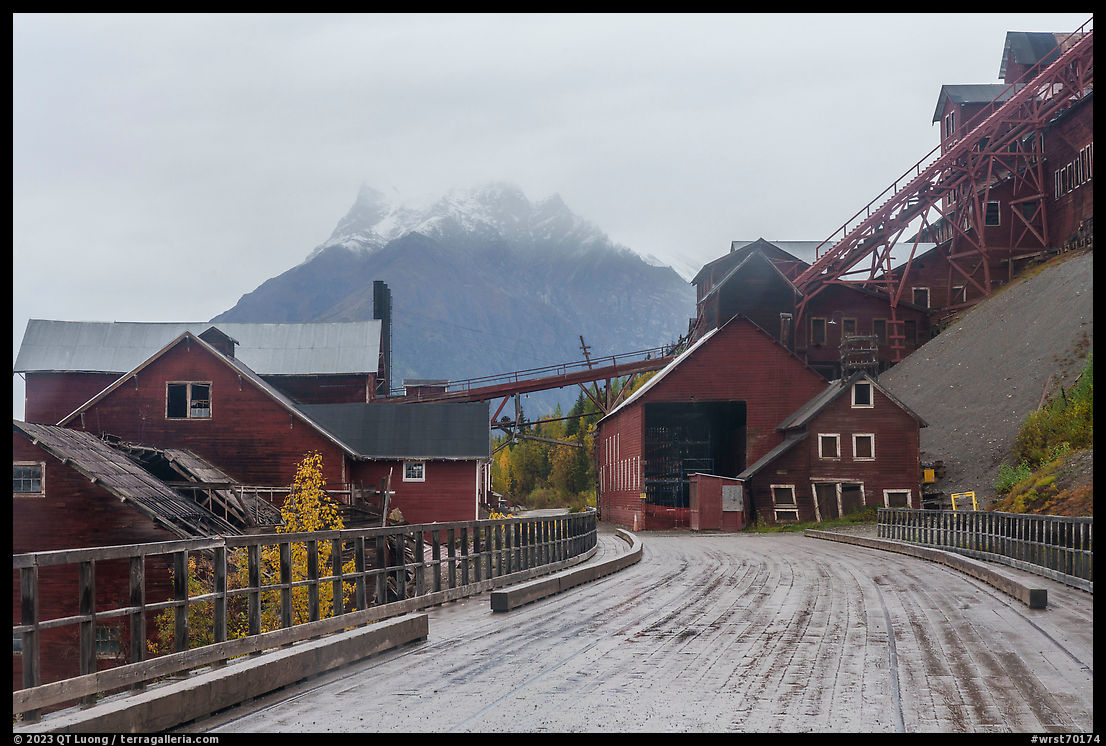
The third challenge is that September is the rainy season in Alaska, so the sky can be cloudy for long periods. We had booked a flight, but upon seeing the rainy weather forecast two days before, we cancelled and rebooked it for a week later. Using air miles on Alaska Air made it a breeze as the airline doesn’t charge any fees. Yet, even with the better weather forecast, during the previous seven nights, I hardly saw any stars at night but plenty of rain. The day before our hike to the Bonanza Mine, we had walked along the Erie Mine trail in intermittent rain under a constantly overcast sky. We bemoaned the weather even more because the northern lights were supposed to be particularly active that night, even at the relatively southern location of Wrangell-St Elias National Park.
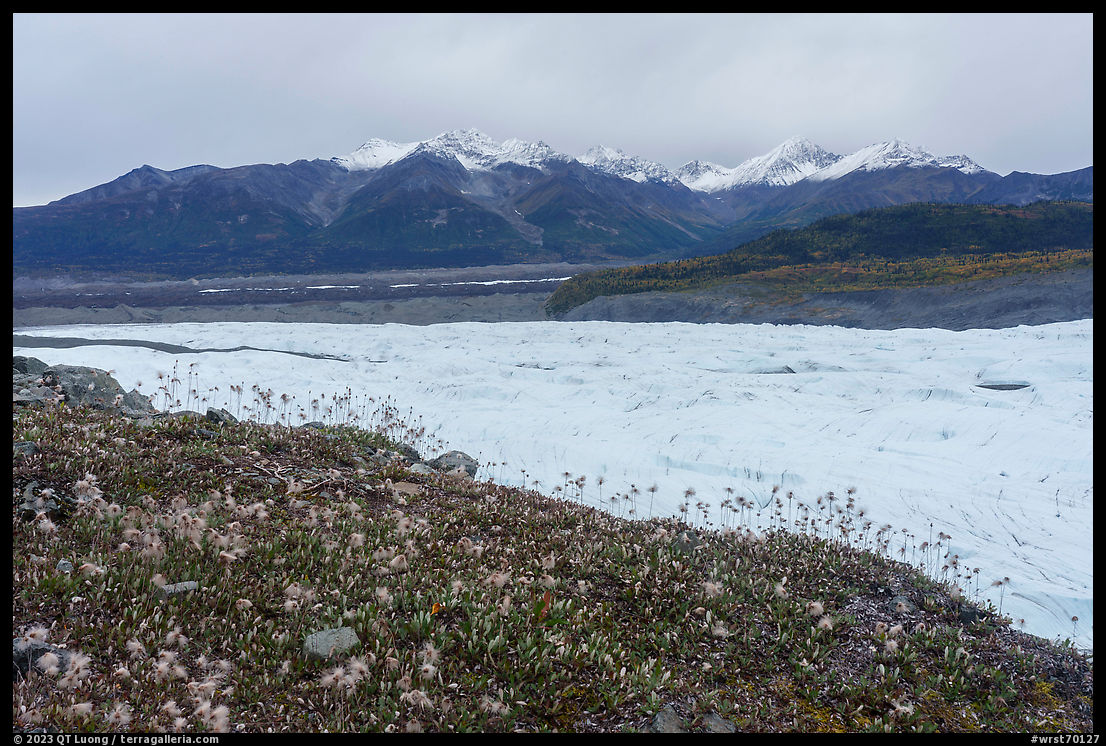
The day of the Bonanza Mine hike was partly cloudy, which was a huge improvement over the previous days. Even though the clouds had blocked the sunset, as we hiked down to camp in the evening, I was excited to see patches of clear sky through which stars were showing up. We reached our camp after 10 pm, before the astronomical twilight which was at 10:30 pm this evening. It had been a long day that started well before sunrise, so the first thing I did was to stop at the bear box to start dinner for my friend and me. While eating, I kept an eye on the sky, trying to assess whether the conditions were improving or degrading. When it appeared that cloudiness was increasing rather than decreasing, I quickly went back to the trail to establish a composition with the glacier and Donoho Peak using the 12-24 f/2.8 lens set at 19mm. Instead of a single exposure, I set up a 50-frame timelapse with an exposure of 8s, ISO 12800. After a quick trip to the bear box to grab more food, I set up a second composition in the direction of the Chugach Mountains. By that time the clouds had almost entirely covered the sky, and in the middle of the 50-frame timelapse, it started raining. Realizing how short the window of time had been, I regretted slacking up by not having set up my camera earlier. Nevertheless, I was grateful for the elusive opportunity and confident I had enough material to work with. The next day, we hiked back to the bridge in the rain.
The processing
I had captured the images with the intention to run them through Starry Landscape Stacker (SLS) (discussed in this night photography primer) and was pleasantly surprised by the results. As expected, SLS has considerably cleaned up the noise for the land portion of the image, as can be seen in the comparison between the stacked image from ISO 12800 frames and a single ISO 6400 image:
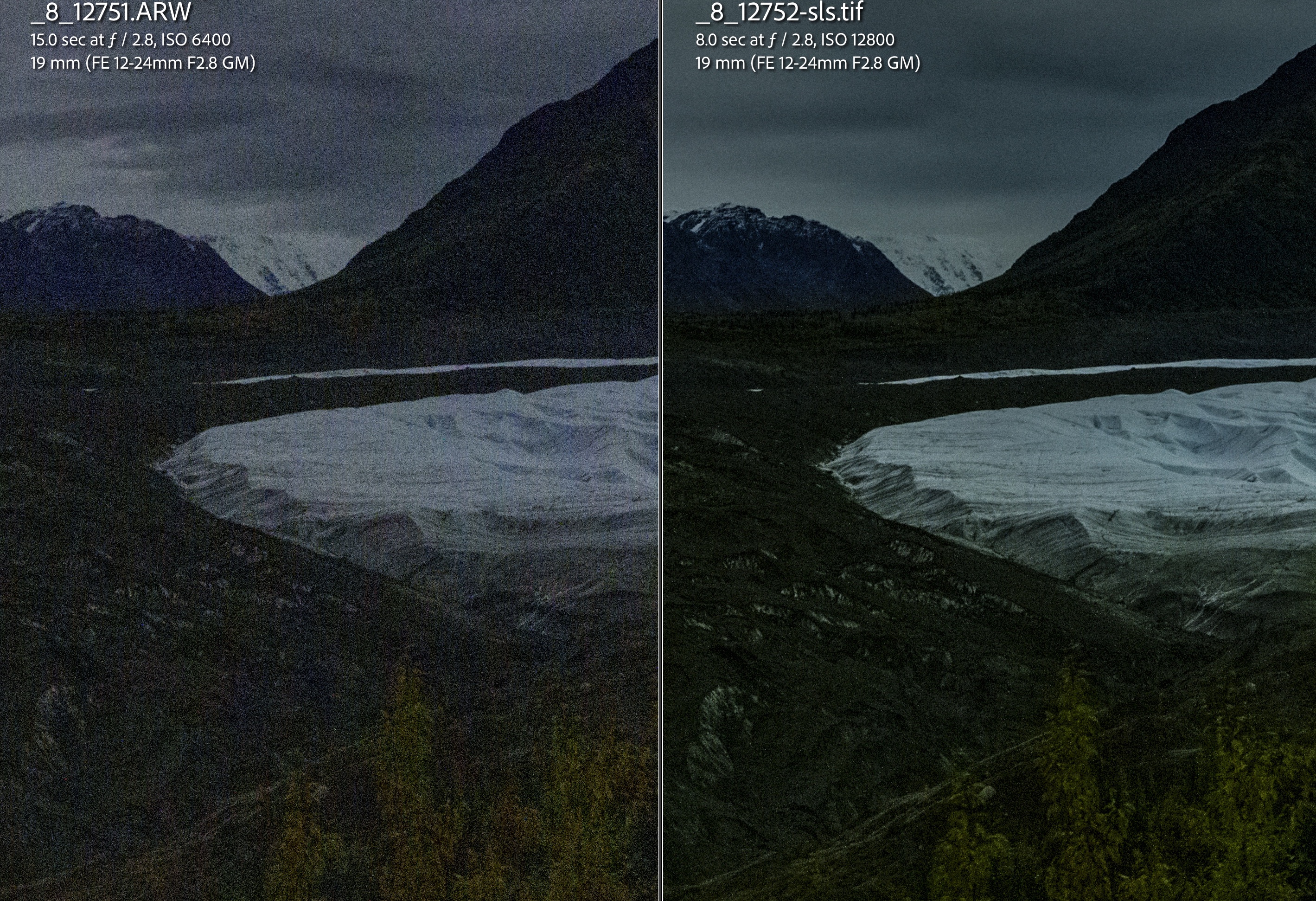
I had assumed the software is meant to work with cloudless skies when stars are visible in all the frames, and was unsure of how well it would work with a sky full of fast-moving clouds. It turned out that it tracked the stars successfully while averaging the clouds, resulting in a satisfying blur akin to a long sky exposure.
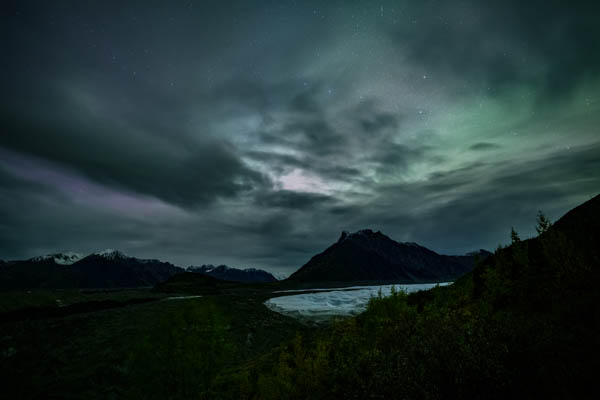
When I compared the stacked image to individual frames, I noticed that stars that were present in some individual frames had disappeared from the stacked image, probably because there were more frames when they were obscured by clouds than frames when they were visible. I divided the images into two stacks of 25 frames to which I applied SLS:
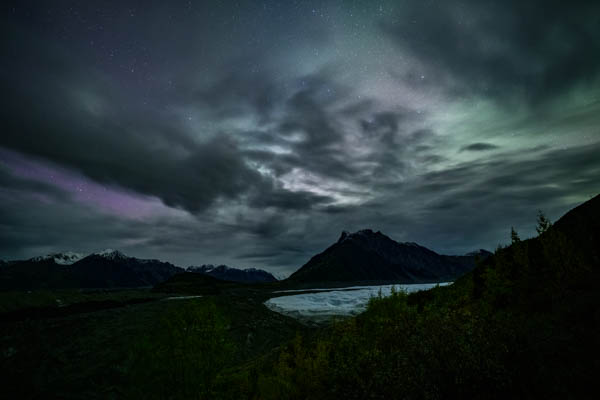
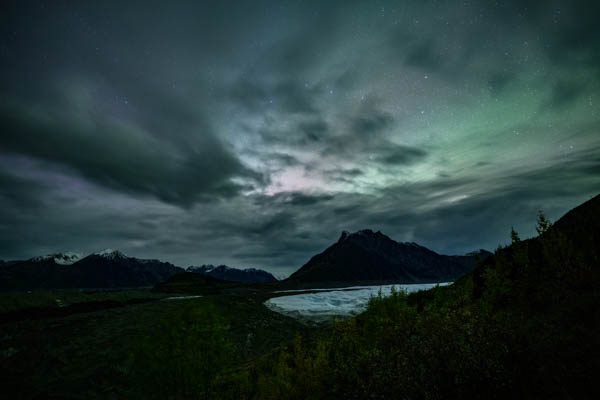
The first resulting image displays stars on the left that become obscured in the second image. On the other hand, a cloud in the upper right corner obscures the sky in the first image, but has cleared in the second image. By compositing those two stacked images, I could present more stars than in the 50-image stack. That is a similar idea to blending images to remove people (#5 in this article). It runs contrary to the idea of capturing a scene at a single moment in time, but so do the star stacking techniques. I tinkered with different groupings, eventually finding that dividing the images into 4 groups of 12 worked best, with the land taken from the global stack. Looking at the four intermediate stacks, you can notice that in the last image of the series of four, the upper right corner is clearer in the last image of the series of two:
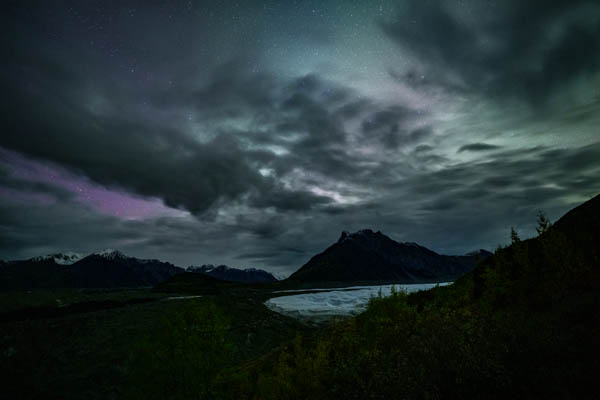
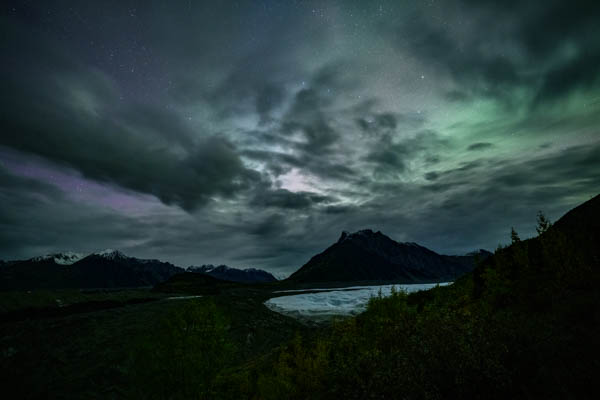
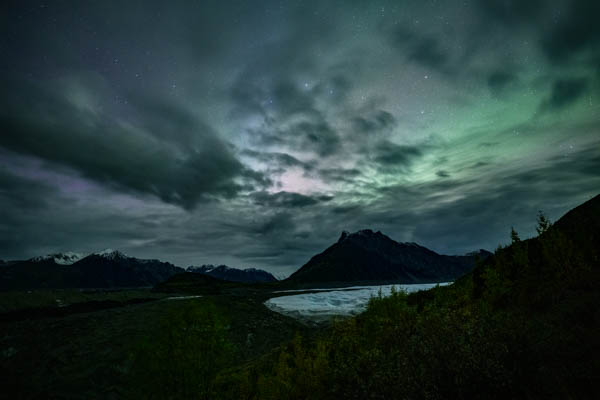
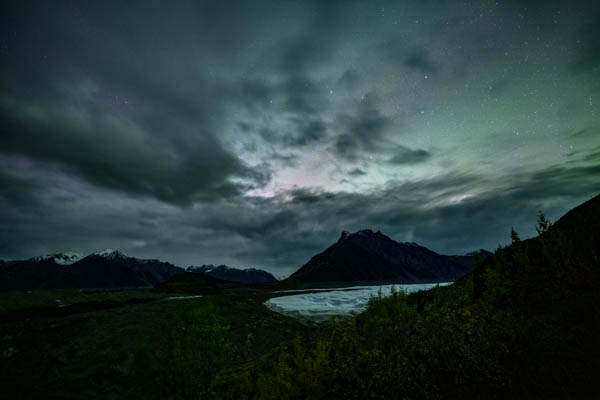
The final image, emphasizing the stars in accordance of the project of which it is part, is shown below. When I stood at the scene, after setting up the timelapse, I had taken my eyes away from the sky. At the time, I thought that there was a bit of light pollution, which in retrospect was unlikely since the closest city in the north is Tok, which lies 125 miles away and has a population of 1200. It was only after I color-corrected the images on the computer that I happily realized that the glow was the aurora, making the image even rarer. Photography is a generous medium!
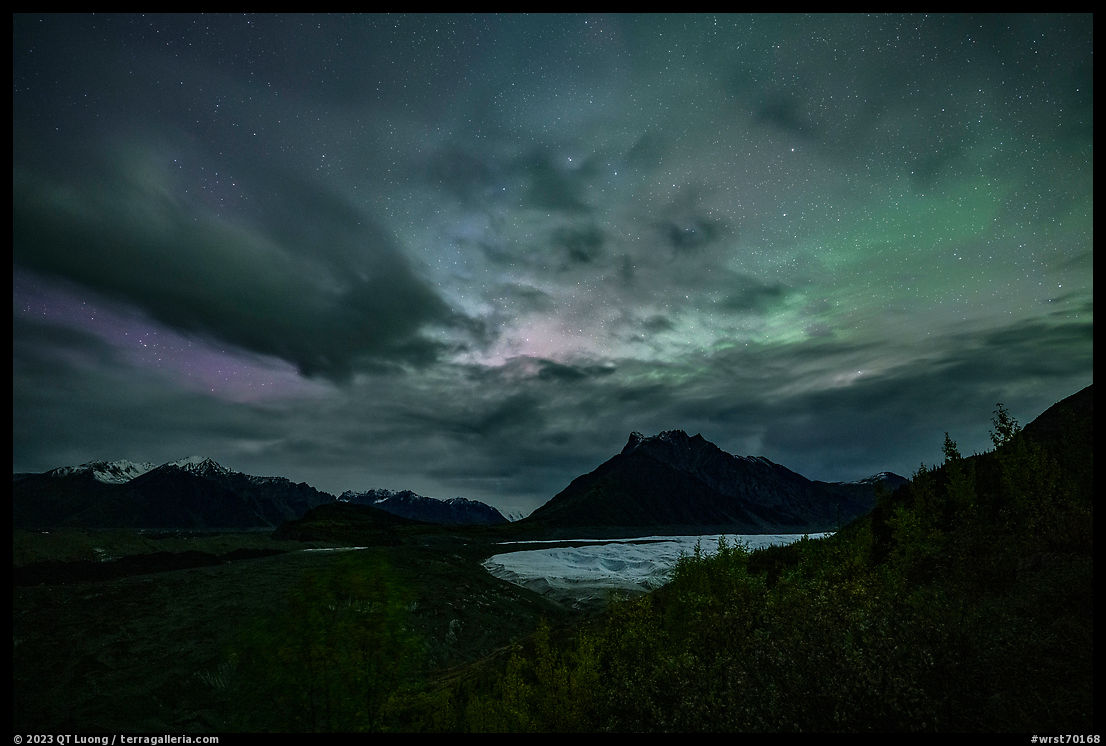
Autumn in Alaska II, part 4 of 5: 1 | 2 | 3 | 4 | 5


Thank you for sharing the Alaska stories. I was especially moved by the night sky photography and the details of your travel. Happy New Year to you and yours.